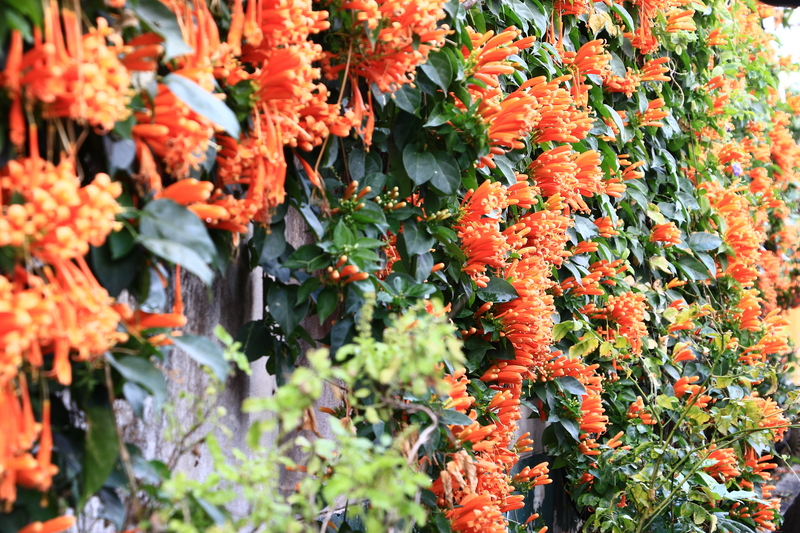Effective Strategies to Winterize Your Garden
Posted on 03/10/2025
Effective Strategies to Winterize Your Garden
As the crisp air of autumn gives way to the chill of winter, dedicated gardeners know that preparation is the secret to a flourishing spring. Winterizing your garden is a critical step in garden care during winter, ensuring plants, soil, and infrastructure survive and emerge healthy when warmer weather returns. This comprehensive guide offers expert-approved steps and smart strategies to help you winterize your garden effectively.

Why is Winterizing Your Garden Important?
Winter can be harsh on both plants and soil. Effective garden winterization protects your plants from frost, wind, snow, and fluctuating temperatures. It also helps maintain soil health, reduce pest problems, and sets the stage for an early and vibrant growing season next year. Neglecting these tasks can lead to plant loss, soil erosion, and disappointment come spring.
1. Clean Up and Remove Debris
- Remove Dead Plant Material: Start by clearing spent annuals, vegetable plants, and fallen fruits. These can harbor pests and diseases over winter.
- Compost Healthy Debris: Compost disease-free plants to enrich your soil for next season.
- Eliminate Invasive Weeds: Uproot invasive weeds before they can set seed and multiply during the dormant months.
- Rake Leaves: While some leaf litter can provide winter shelter for beneficial insects, thick mats should be removed to prevent mold and smothering of grass or low-growing plants.
Tip: Dispose of diseased plant material, rather than composting, to prevent reinfection next year.
2. Assess and Amend Your Soil
Soil health is the foundation of a thriving garden. As part of your garden winter prep, take time to assess and amend your soil:
- Test Soil pH and Nutrients: Use a soil test kit to check nutrient levels and pH balance. Amend as necessary with lime, sulfur, or organic fertilizers.
- Add Compost and Organic Matter: Spreading a 2-3 inch layer of compost or well-rotted manure improves soil structure, boosts microbial activity, and replenishes nutrients.
- Apply Mulch: Cover garden beds with straw, shredded leaves, bark, or other organic mulch to insulate roots, retain moisture, and suppress weeds.
Mulching Techniques to Boost Winter Protection
- For perennials and bulbs, wait until the ground is slightly frozen before mulching, which prevents heaving caused by freeze-thaw cycles.
- For vegetable beds, use a thicker mulch (4-6 inches) to shield tender plants and overwintering crops.
3. Protect Your Perennials and Shrubs
Perennials and shrubs benefit from extra attention to survive winter cold and fluctuating temperatures:
- Cut Back Selectively: While many perennials benefit from a fall trim, some (like ornamental grasses) provide winter interest and shelter for wildlife if left standing.
- Insulate Roots: Mulch the base of perennial plants and shrubs well, especially newer plantings, to shield roots from severe cold.
- Wrap Tender Shrubs: Use burlap, frost blankets, or horticultural fleece to protect tender or young shrubs from windburn and heavy snow.
- Water Well Before Freeze: Hydrate plants deeply in late autumn so they enter dormancy well-hydrated, as dry winter winds can dehydrate even dormant plants.
Extra Winterizing for Roses
- After the first hard frost, mound soil around the base of each rose bush, then cover with straw or leaves, and wrap with burlap if needed.
4. Care for Lawn and Turf
Lawns benefit from winter lawn preparation as much as garden beds. Winterizing your lawn helps prevent disease and ensures lush growth in spring.
- Last Mow: Mow one last time at a slightly lower blade height to reduce disease risk and matting under snow.
- Remove Thatch and Aerate: Remove thatch and, if needed, aerate to reduce soil compaction and improve water penetration.
- Apply Fall Fertilizer: Use a slow-release, high-potassium fertilizer to help grass roots store energy for winter.
- Rake Leaves Promptly: Prevent mold and fungus by clearing leaves quickly, allowing grass to breathe and soak up sunlight.
5. Safeguard Trees and Young Saplings
Trees, especially young or newly planted ones, need care to avoid winter damage:
- Wrap Trunks: Use tree wrap or protective tubes to prevent sunscald and damage from hungry critters like rabbits and deer.
- Remove Fallen Fruit: Clear around the base of fruit trees to reduce disease and deter overwintering pests.
- Water Well: Give trees a thorough, deep watering before the ground freezes, especially during dry autumns.
Pest-Proofing Tips
- Install wire mesh or trunk guards to protect young trees from rodents and deer.
- Prune dead or diseased branches to reduce entry points for pests and pathogens.
6. Winterize Raised Beds and Containers
Raised beds and garden containers need special attention as they're more exposed to the elements.
- Empty Clay Pots: Bring in or empty and store any terra cotta or ceramic pots to prevent cracking from freeze-thaw cycles.
- Amend and Mulch Raised Beds: Remove plant debris, add fresh compost, and apply a thick layer of mulch to insulate soil.
- Cover Beds: Use floating row covers or old blankets on extremely cold nights to protect overwintering crops.
- Elevate Containers: Place pots on pot feet or bricks to prevent moisture from freezing and cracking.
7. Prepare Garden Tools and Infrastructure
Proper tool care and garden infrastructure maintenance save you time, money, and frustration when you return to gardening in spring.
- Clean and Store Tools: Wash off soil, sharpen blades, and oil metal surfaces to prevent rust.
- Drain Hoses and Irrigation: Hoses, drip lines, and irrigation systems should be drained and stored indoors or in a shed to avoid freezing damage.
- Repair Structures: Inspect and mend fences, trellises, raised beds, and greenhouses. This minimizes winter storm damage and keeps pests out.
Greenhouse Winterization
- Clean glass/panels and check for drafts or leaks.
- Set up a thermometer to monitor temperature and use bubble wrap or thermal insulation as needed.
8. Plan for Wildlife and Beneficial Insects
Maintaining garden biodiversity even during winter benefits your garden ecosystem in the long run.
- Leave Some Shelter: Allow seedheads, ornamental grasses, and some log piles to remain, providing habitat for birds and pollinators.
- Install Bird Feeders and Baths: This supports resident and migratory birds, who also help control pests.
- Create Insect Hotels: Use bundles of hollow stems, sticks, or commercial bee hotels to shelter beneficial insects over winter.
9. Plan for Early Spring Planting
Winter is also the ideal time for strategic planning and organizing seeds for the coming year.
- Order Seeds and Plants: Review catalogs and order early for the best selection, especially rare varieties.
- Organize Tools and Supplies: Take inventory of what needs to be replaced or repaired before the next season begins.
- Design Next Year's Garden: Sketch out bed layouts, crop rotations, and companion planting plans to maximize space and productivity.
10. Regional Considerations for Winter Garden Care
Garden winterization timing and techniques vary by climate. Understand your local USDA hardiness zone and typical weather patterns to fine-tune your approach.
Tips by Region:
- Cold Climates: Start early and focus on insulation, especially for perennials, bulbs, and young trees. Protect from drying winter winds.
- Milder Winters: Take advantage of cool-season crops; use lighter mulches and watch for excess moisture and fungal diseases.
- Wet Climates: Ensure good drainage, keep mulch away from stems, and prevent pooling water to reduce rot and root diseases.

Common Mistakes to Avoid When Winterizing Your Garden
- Ignoring Soil Health: Failing to amend and protect your soil can set growth back for months.
- Over-pruning: Some plants are sensitive to heavy fall pruning; research species-specific needs.
- Skipping Pest Prevention: Leaving plant debris or fallen fruit can spread pests and diseases.
- Storing Tools Wet: Moisture leads to rust and reduces the lifespan of garden tools.
Conclusion: Prepare Your Garden for a Successful Spring
Taking the time to winterize your garden is an investment in a bountiful, beautiful spring. By cleaning up debris, caring for soil, protecting plants, and organizing your tools and plans, you'll minimize winter damage and reap the rewards when gardening season returns. Plan, prepare, and protect your garden through winter--your plants (and your future self) will thank you for it!

